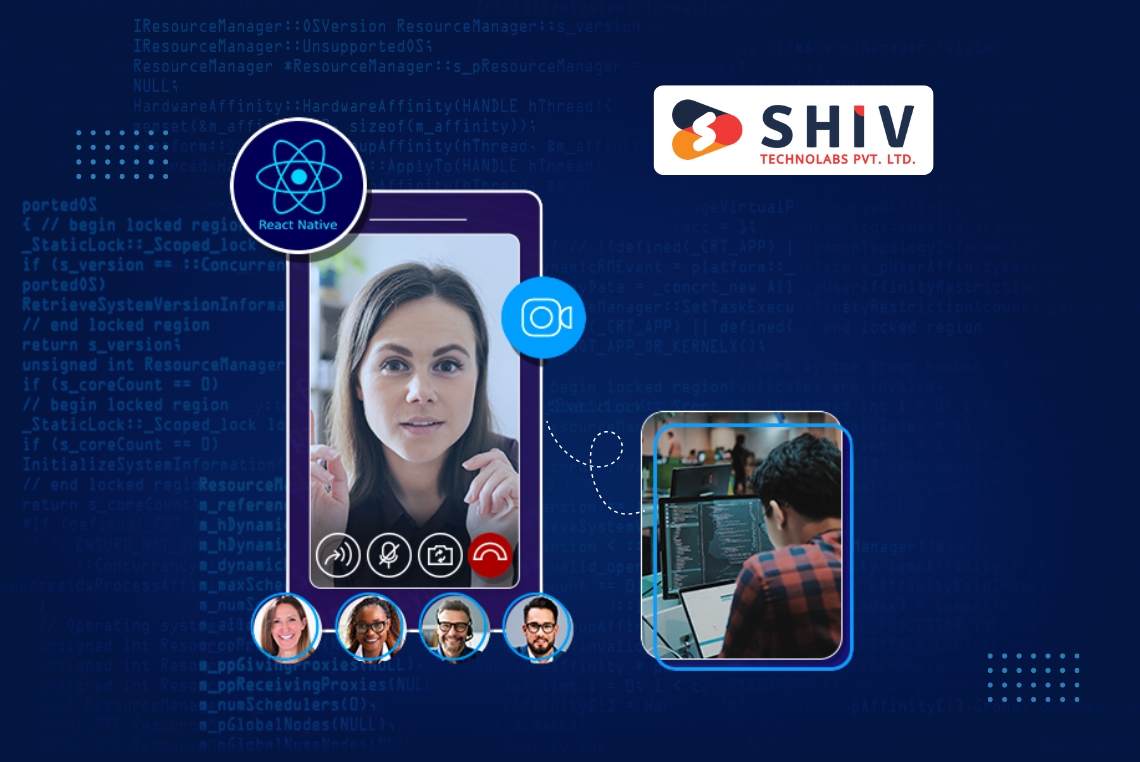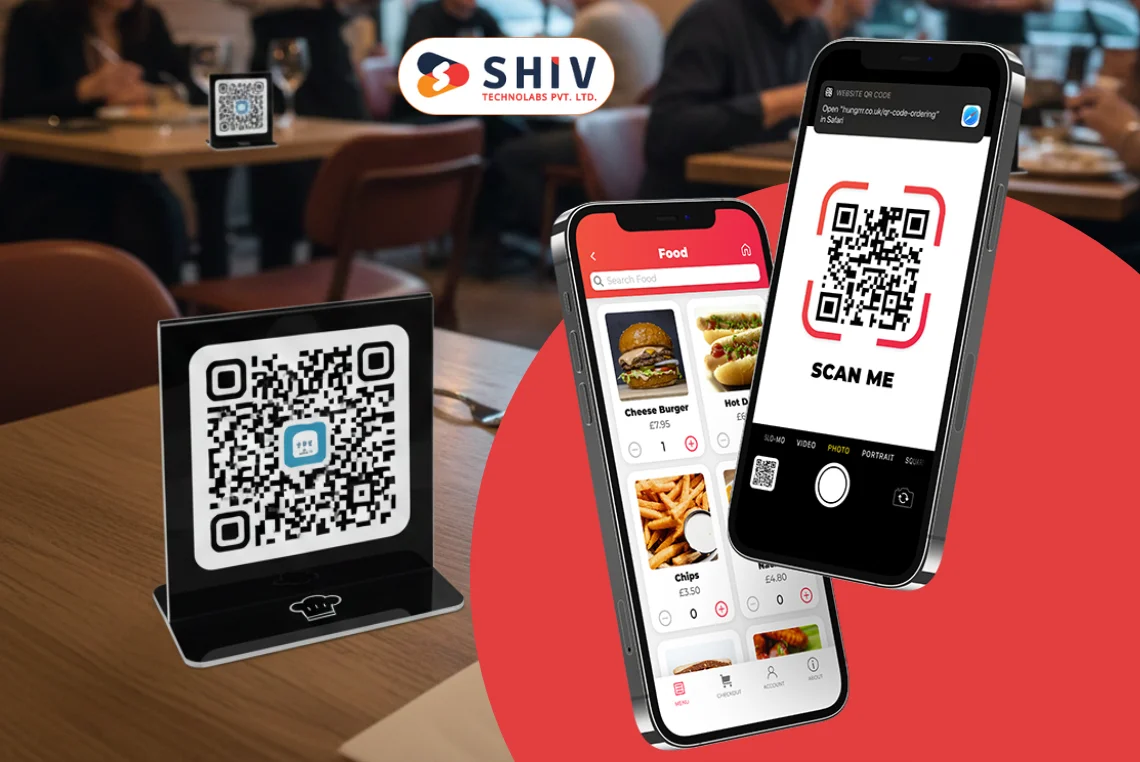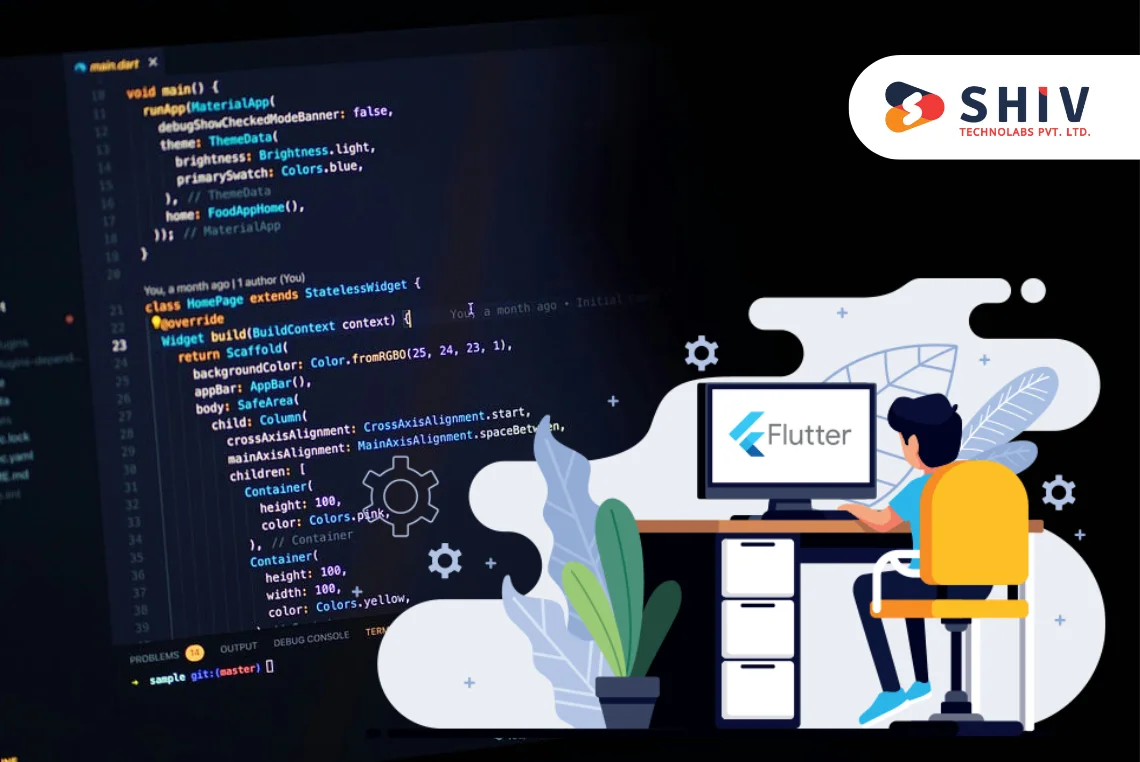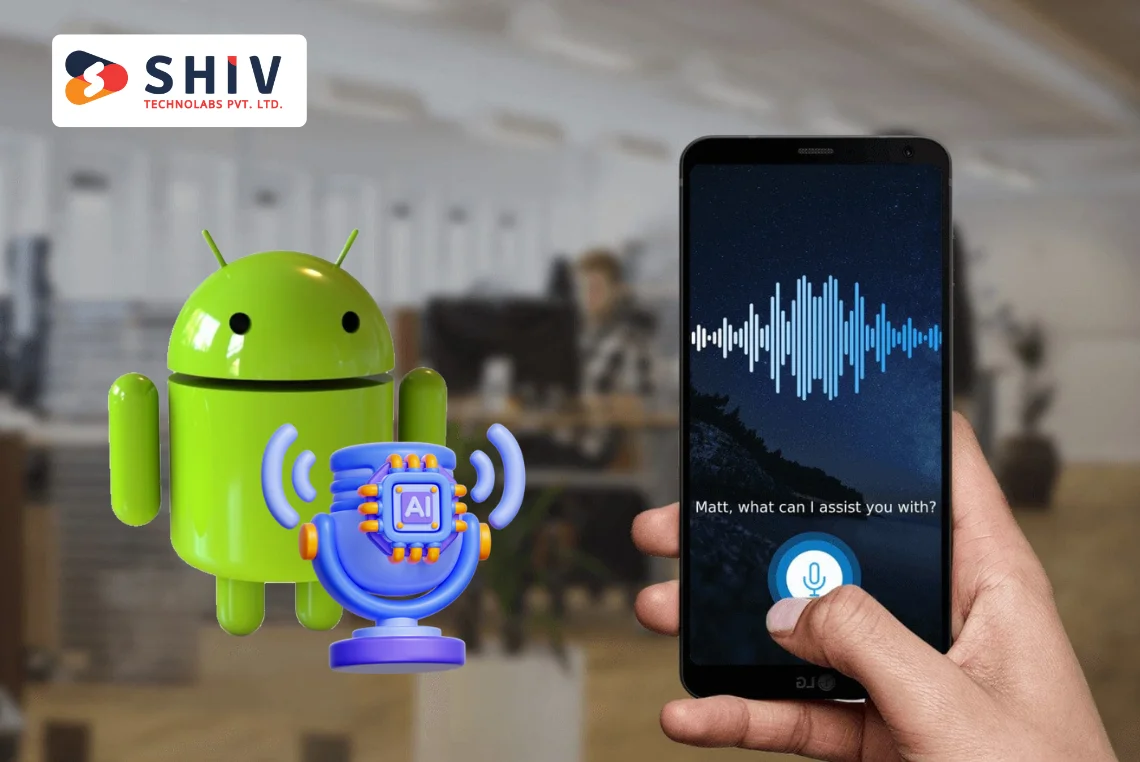Table of Contents
Emerging technologies like Augmented Reality (AR), Virtual Reality (VR), Internet of Things (IoT), and voice interfaces are revolutionizing the app development landscape. According to a report by Statista, the AR/VR market is expected to grow to $296.9 billion by 2024, with industries like retail, healthcare, and education leading adoption. Simultaneously, IoT is projected to connect over 75 billion devices by 2025, enhancing connectivity and efficiency across industries.
Voice technology is also witnessing explosive growth, with global smart speaker shipments surpassing 150 million units in 2023, according to Canalys. These trends indicate that the integration of AR/VR, IoT, and voice features in apps is not just a passing trend—it’s the future of digital innovation. Businesses and developers who embrace these technologies now will gain a competitive edge in delivering immersive, connected, and user-friendly applications.
In this blog, we’ll explore how React Native, a popular cross-platform framework, is uniquely positioned to bring these advanced features together. From enabling React Native augmented reality to integrating React Native IoT solutions, we’ll dive into the tools, features, and best practices that can help developers build cutting-edge apps.
Why React Native is Ideal for AR/VR, IoT, and Voice Integration?
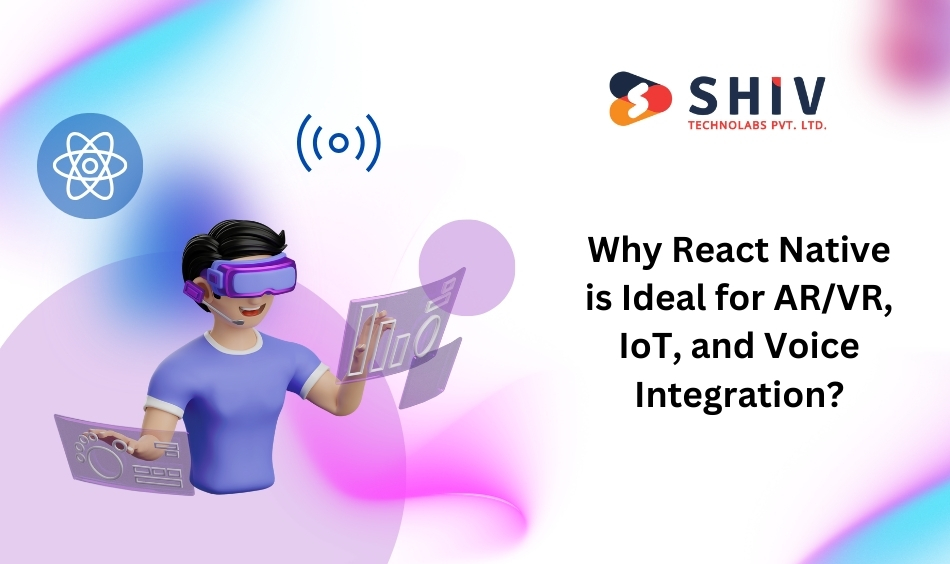
React Native is a popular framework for cross-platform app development, allowing developers to build apps that run smoothly on both iOS and Android. Its flexibility, modular architecture, and strong community support make it an excellent choice for integrating advanced features like AR/VR, IoT, and voice.
# Key Benefits of React Native for Advanced Features:
- Reusable Codebase: A single codebase for iOS and Android significantly reduces development time and costs.
- Rich Ecosystem: React Native supports numerous libraries and plugins, including those for AR/VR, IoT protocols, and voice recognition.
- Real-Time Updates: Hot Reloading and Over-the-Air updates simplify the testing and deployment of new features.
- Third-Party Integration: Seamless integration with native modules ensures high performance, even for resource-intensive applications.
Whether you’re looking to implement React Native augmented reality features, IoT connectivity, or voice command functionality, the framework provides all the tools you need to deliver an exceptional user experience.
Integrating Augmented Reality (AR) with React Native
AR in React Native allows developers to create immersive experiences that blend digital content with the real world. By leveraging frameworks like ARKit (for iOS) and ARCore (for Android), React Native apps can deliver powerful AR features that enhance user interaction.
# Use Cases of AR in React Native:
- Retail and E-Commerce: Let users visualize products in their environment before purchasing.
- Education and Training: Offer interactive learning experiences through AR-enhanced tutorials.
- Gaming: Build engaging AR-based games with real-world interaction.
- Real Estate: Enable virtual property tours by overlaying digital models onto physical spaces.
# Tools and Libraries:
- ViroReact: A popular library for building AR and VR experiences in React Native. It supports 3D objects, animations, and interactive scenes.
- React-Native-ARKit: Ideal for integrating ARKit functionalities like object placement, face tracking, and motion capture in iOS apps.
- React-Native-ARCore: Simplifies the development of Android apps with ARCore-based features.
# Key Features to Implement:
- Real-time object detection and tracking.
- 3D rendering of objects using AR overlays.
- User-friendly gesture controls for interacting with AR elements.
Enhancing IoT Features Using React Native
The Internet of Things (IoT) is transforming industries by enabling connected devices that communicate and share data. React Native IoT integration allows developers to build apps that seamlessly interact with IoT devices, offering users smarter and more connected experiences.
# Applications of IoT with React Native:
- Smart Homes: Control smart appliances, lighting, and security systems through a mobile app.
- Wearables: Monitor health and fitness data from IoT-enabled devices like smartwatches.
- Industrial Automation: Manage and monitor machinery and systems remotely using IoT dashboards.
- Agriculture: Track soil conditions, irrigation systems, and weather forecasts via IoT sensors.
# Tools and Protocols:
- MQTT.js: A lightweight messaging protocol for real-time communication between IoT devices and mobile apps.
- React-Native-Bluetooth-Classic: For integrating Bluetooth-enabled IoT devices like fitness trackers and smart appliances.
- WebSocket Integration: Enables two-way communication for real-time IoT data exchange.
# Key Features to Implement:
- Device pairing and configuration.
- Real-time data visualization with interactive dashboards.
- Remote control of IoT devices through voice or touch commands.
- Alerts and notifications for device status updates or anomalies.
Voice Commands and Assistants in React Native Apps
Voice technology has become an integral part of modern apps, allowing users to perform actions hands-free. With React Native, integrating voice commands and virtual assistants is both efficient and effective.
# Benefits of Voice Features:
- Hands-Free Convenience: Users can interact with the app without manual input, enhancing accessibility.
- Personalization: Voice assistants can offer tailored suggestions based on user preferences and behavior.
- Engagement: Voice interactions create a conversational experience, keeping users more engaged.
# Tools and Libraries:
- React-Native-Voice: A simple and powerful library for speech-to-text functionality.
- Google Speech-to-Text API: For advanced voice recognition and natural language processing.
- Amazon Lex: Allows seamless integration of conversational interfaces powered by AI.
# Use Cases of Voice Integration:
- Smart Assistants: Enable users to manage tasks, set reminders, or control connected devices via voice commands.
- Voice Search: Allow users to search content or products in the app through voice input.
- Accessibility: Improve usability for visually impaired users by offering voice navigation and text-to-speech features.
# Key Features to Implement:
- Accurate speech recognition for multiple languages.
- Natural language understanding for conversational interactions.
- Voice feedback to guide users through app functionality.
Best Practices for Integrating Emerging Technologies

When implementing AR/VR, IoT, or voice features in React Native, it’s crucial to follow best practices to ensure a seamless and user-friendly experience.
# Optimize Performance
- Use native modules for resource-intensive tasks like AR rendering or IoT data processing.
- Optimize asset loading to reduce app lag, especially for AR/VR graphics.
# Prioritize User Experience
- Design intuitive interfaces for complex features like IoT dashboards or AR overlays.
- Provide clear onboarding instructions to help users understand and navigate new features.
# Ensure Cross-Platform Compatibility
- Test extensively on both iOS and Android to ensure consistent performance.
- Leverage platform-specific capabilities like ARKit for iOS and ARCore for Android while maintaining a unified user experience.
# Focus on Security
- Use encryption protocols like SSL/TLS for IoT data transmission.
- Implement robust authentication mechanisms for voice commands and IoT controls to prevent unauthorized access.
# Continuously Update and Test
- Regularly update the app to incorporate user feedback and fix bugs.
- Use tools like Jest or Detox for automated testing of complex features.
Why Hire React Native Developers from Shiv Technolabs?
Developing an app with AR/VR, IoT, and voice features requires expertise in both React Native and emerging technologies. At Shiv Technolabs, we provide comprehensive React Native development services tailored to your needs.
# Here’s Why we Could be the Perfect Fit:
- Experienced Team: Our developers have hands-on experience in integrating AR in React Native, building IoT-enabled apps, and creating voice interfaces.
- Customized Solutions: We tailor our services to your specific requirements, ensuring a solution that aligns with your business goals.
- End-to-End Development: From conceptualization and design to deployment and support, we handle the entire development lifecycle.
- Cost-Effective Services: Get high-quality apps at competitive prices without compromising on performance.
Whether you need to hire React Native developers for a specific project or a dedicated team to manage your app development, Shiv Technolabs is your trusted partner.
Conclusion
Integrating AR/VR, IoT, and voice features into React Native apps opens up endless possibilities for innovation and user engagement. By leveraging the power of React Native and following best practices, businesses can create apps that stand out in today’s competitive market.
At Shiv Technolabs, a leading React Native development company, we specialize in delivering advanced solutions that incorporate React Native augmented reality, IoT, and voice functionalities. Ready to transform your app idea into reality? Hire React Native experts from Shiv Technolabs today and create an app that exceeds user expectations.

